CAPABILITY ANALYSIS AND NON-NORMAL DISTRIBUTION
Three major types of distributions are typical of manufacturing processes (see Figure 14.2). The normal distribution (Figure 14.2A) fits most manufacturing operations. Capability studies are analyzed and interpreted using the procedures described in Chapter 12 when the data form a single normal curve.
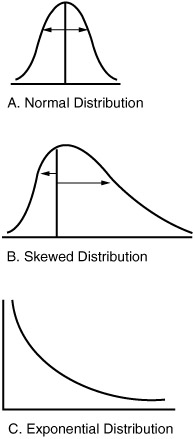
Figure 14.2: The three major types of distributions.
Skewed distributions (Figure 14.2B) result from some manufacturing processes. The mirror image technique may be used to study the capability level of manufacturing processes that produce skewed data sets. (Skewed distributions may also be analyzed by using normalizing transformations or by using the skewed probability function. Caution should be exercised when using transformations that force data onto the normal distribution. The conclusions that are valid for the transformed data may not be meaningful for the actual manufacturing process.)
Some manufacturing processes produce data that follow the exponential distribution (Figure 14.2C). This curve is completely one sided and is based on a simple density function.
The Mirror Image Technique : Skewed distributions (Figure 14.2B) cannot be analyzed with the normal distribution because they are not symmetric around the mean. The area under the curve on one side of the mean is not equal to the area on the other side. The curve in Figure 14.3 is a skewed distribution and shows the difference in the spread for the two sides of a skewed distribution.

Figure 14.3: A skewed distribution showing the difference in spread.
The distances from the mode to the inflection points are not equal. The techniques that make use of symmetry and the normal distribution provide poor estimates of processes that are skewed and not symmetric. Therefore, capability cannot be defined by ±3 standard deviations from the mean. Instead, capability is defined by the percentages in and out of specifications. Figure 14.4 shows the lack of fit between the skewed distribution of observations and the normal curve.
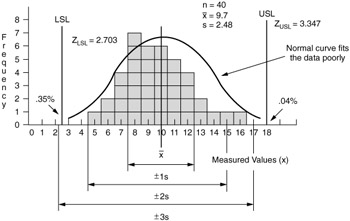
Figure 14.4: The lack of fit between the skewed distribution and the normal curve.
The calculated standard deviation ( s = 2.48) is too small for the high side of the curve and too small for the large side. The mirror image technique estimates two different values for the spread of skewed curves. One estimate is small and the other is large. Each estimate of spread is used on only one side of the distribution.
Steps for describing skewed curves with the mirror image technique are as follows :
-
Build a histogram and frequency distribution of the original data set. Histograms and frequency distributions (see Figure 14.5) show the skewness of the data set and help people visualize the appropriate use of values calculated during the procedure.

Figure 14.5: Histogram and a skew curve superimposed. -
Identify the mode of the distribution. The mode of a distribution is the measured value that has the greatest frequency. This value has the most Xs above it and defines the peak of the curve (see Figure 14.5). The mode is used as the mirror or hinge of the distribution for this technique.
-
Build a symmetric distribution based on the shape of half the original data set. A symmetric distribution is constructed by using the frequencies from one side of the original data set. Building a histogram helps the accurate construction of the symmetric data set. In Figure 14.6, the frequencies from the low side of the original data set were used to build the data on the high side of the mode. The resulting data set is very similar to the normal distribution. Although the resulting curve is fabricated, the low side of the curve is exactly like the low side of the original data set. The standard deviation calculated from these data will be a good estimate of the spread for the low side of the original data set. This standard deviation should only be used for the low side of the original data set.
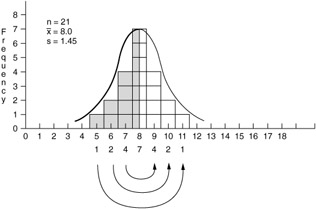
Figure 14.6: Build of the symmetrical distribution (left side). -
Calculate the mean (Xbar) and standard deviation (s) for the fabricated symmetric distribution (see Figure 14.6). If the technique has been performed correctly, the mean of this curve should be equal to the mode of the original data set. The standard deviation is an estimate of variation that describes the spread for the low side of the original data set. The standard deviation should be used only for the side of the original data set that was used to generate the symmetric distribution (see Figure 14.6).
-
Build a symmetric distribution that describes the second side of the original data set (see Figure 14.7). The frequencies on the high side of the mode for the original data set were used to build the distribution in Figure 14.7. The high side of the curve is exactly like the high side of the original data set.
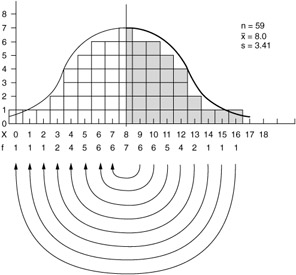
Figure 14.7: Build of the symmetrical distribution (right side). -
Calculate the mean (Xbar) and standard deviation ( s ) for the symmetric distribution (see Figure 14.7). The mean of this curve should be equal to the mode of the original data set. The calculated standard deviation is an estimate of variation that describes the spread for the high side of the original data set. This standard deviation should be used only for the side of the original data set that was used to generate the symmetric distribution (see Figure 14.8).
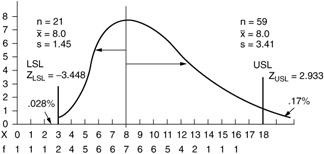
Figure 14.8: Skewed distribution showing the s of both sides. -
Analyze the capability level of the skewed distribution. The capability level of the original data set is analyzed by calculating standardized values (Z-values; see Chapter 12) using the mode and the two calculated standard deviations. Standardized values and estimated percentages outside of the specifications are presented in Figure 14.8.
The sample data set demonstrates the poor conclusions that would be made if the normal distribution were assumed to describe the original data set. The normal distribution was applied to the data set in Figure 14.4. Although the arithmetic was calculated correctly, the resulting analysis was not valid. A larger percentage (.35%) was estimated outside the lower specification limit (LSL). The upper specification limit (USL) was estimated as being more than three standard deviations from the distribution mean. This could be interpreted as fulfilling the capability requirements. A radically different interpretation is made when the skewness is included in the capability analysis (see Figure 14.8). Because the mode and two different estimates of spread are used for the skewed curve, different standardized values (Z LSL and Z USL ) and percentages outside of the specifications were calculated. A larger percentage was estimated outside of the upper specification limit (USL). This is contrary to the analysis presented in Figure 14.4 that would suggest that undersized parts were being produced. Parts were actually oversized.
EAN: 2147483647
Pages: 181